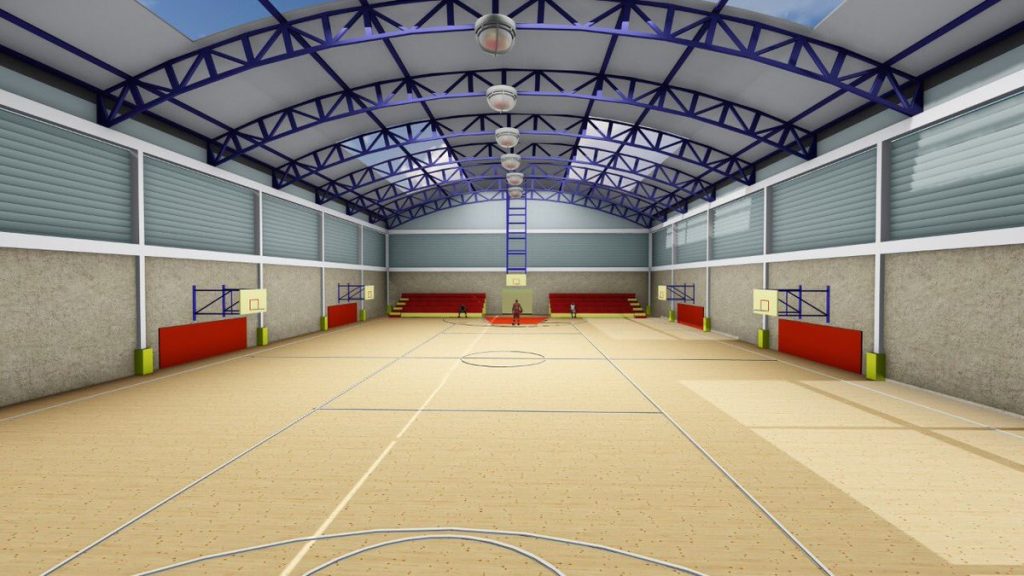
Basketball is one of the most popular sports in the world, enjoyed by millions of people of all ages. Whether played professionally or recreationally, the basketball court is the stage where the game unfolds. The dimensions of a basketball court play a crucial role in the game’s integrity and fairness. Additionally, the maintenance and resurfacing of basketball courts are essential to ensure player safety and game quality. In this article, we will delve into the dimensions of basketball court and explore the significance of basketball court resurfacing.
A regulation basketball court, as defined by the National Basketball Association (NBA) and the International Basketball Federation (FIBA), has specific dimensions. The court’s length measures 94 feet (28.65 meters), while its width spans 50 feet (15.24 meters). These standardized dimensions provide consistency across the sport, ensuring a level playing field for all.
Within the court’s boundaries, there are various lines and zones that dictate specific aspects of gameplay:
The basketball hoop stands at a height of 10 feet (3.05 meters) above the court’s surface. The backboard, typically made of acrylic or tempered glass, is 72 inches (1.83 meters) wide by 42 inches (1.07 meters) high.
The surface of a basketball court varies but is usually made of hardwood, specifically maple wood, which offers optimal playing conditions. The smooth, resilient surface ensures consistent ball bounce and player traction. However, outdoor basketball courts may use materials like asphalt or concrete.
Professional and indoor courts typically feature metal baskets with nylon or chain nets. Outdoor courts may use more durable materials, such as fiberglass backboards and chain nets, to withstand weather conditions.
Surface Maintenance
The surface of a basketball court undergoes significant wear and tear over time, especially in high-traffic areas. Resurfacing is essential to maintain a smooth, even playing surface. Without regular maintenance, the court can become uneven, leading to potential injuries and a decrease in the quality of gameplay.
Basketball is a high-impact sport that places considerable stress on players’ bodies. An uneven or damaged court surface can increase the risk of injuries, such as sprained ankles or knee injuries. To protect players’ safety, it’s crucial to resurface the court when necessary.
The quality of the court surface directly impacts the bounce of the basketball. A worn-out or damaged surface can result in unpredictable ball behavior, affecting the overall quality of the game. Resurfacing ensures that the court maintains its intended characteristics, allowing for fair and enjoyable gameplay.
A well-maintained basketball court is not only safer but also more visually appealing. Regular resurfacing can breathe new life into an aging court, making it more inviting to players and spectators alike. Aesthetics play a significant role in creating a positive and enjoyable basketball experience.
While resurfacing a basketball court may seem like an expense, it can actually save money in the long run. Neglecting maintenance and resurfacing can lead to more extensive and costly repairs down the road. By addressing issues early, court owners can extend the court’s lifespan and reduce overall maintenance expenses.
For official games and tournaments, basketball courts must meet specific standards and regulations set by organizations like the NBA and FIBA. Regular resurfacing ensures that the court remains compliant with these regulations, allowing for official competitions to take place.
Basketball courts are often hubs for community activities and recreational sports. Maintaining and resurfacing these courts demonstrates a commitment to the well-being of the community and encourages increased use and engagement.
The dimensions of a basketball court are not just lines and measurements; they are the framework upon which the game of basketball is built. Ensuring that a basketball court meets these dimensions and maintains its integrity through regular resurfacing is essential for the safety of players, the quality of the game, and the enjoyment of all those who participate and spectate. So, whether you’re a player, court owner, or a fan of the sport, understanding and appreciating the dimensions of a basketball court and the importance of basketball court resurfacing is fundamental to the world of basketball.